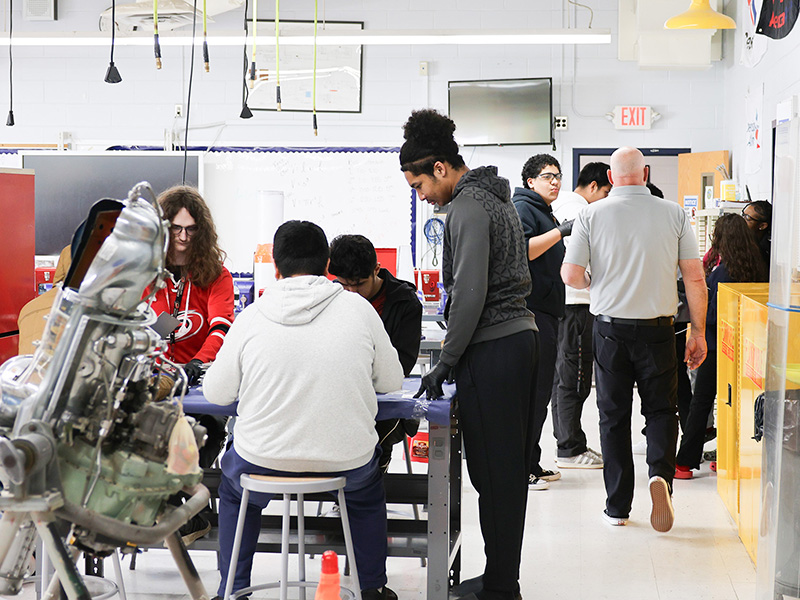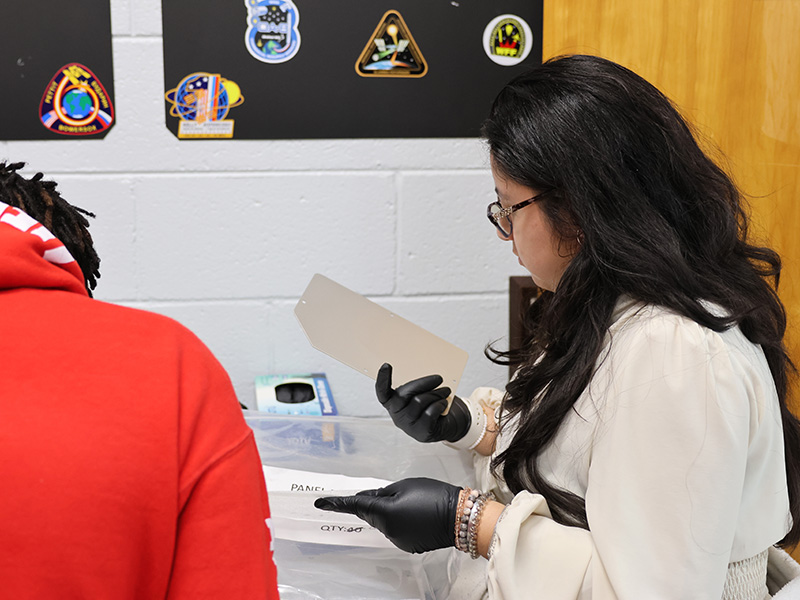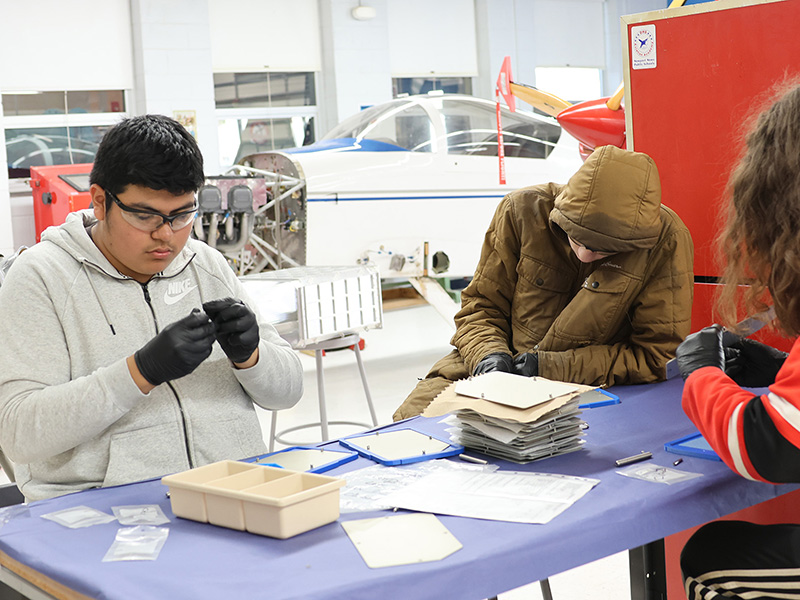Aviation Academy students' out of this world work supplies International Space Station
Posted: April 15, 2025
People learned a lot about NASA astronauts living and working in space during the recent prolonged stay of Butch Wilmore and Suni Williams aboard the International Space Station.
Attention focused heavily on their day-to-day activities until their safe return to Earth in March.
Students at Denbigh High School's Aviation Academy are well-acquainted with the importance of the equipment used on spacecraft. In partnership with NASA, they have assembled lockers that are used on the International Space Station since 2016. Students sign the lockers and receive photos of them being used in space.
Hands-on experience meets real world application as the Aviation Academy participates in NASA HUNCH-High Schools United with NASA to Create Hardware. High School students across the country work on materials for the astronauts to use on the space station.
"It's an amazing experience to be able to build these for them to use in space," said Caleb White, an eleventh grader in the Aviation Academy program who provided quality check supervision for his classmates during their current project.
"It's like our work is to be put to better use, to be used in space. And we get proof of that when we sign it and then they take pictures of it."
The Aviation Academy has assembled numerous lockers over the years, working on assignments as materials arrive from NASA and returning them for storage until they're needed. In March, students were inspecting and assembling doors for lockers that will be their latest contribution.
"These lockers are used to store everything from science materials to clothes and food," said Neal Witherspoon, who serves as HUNCH adviser and teaches the Aviation Maintenance Technology I course where students work on the lockers.
Precision is of utmost importance as any tiny defect or contaminant could potentially put an astronaut in space in danger. Students wear gloves to keep any oils from their skin from transferring while working with many tiny metal parts on covered tables.
With blueprint drawings alongside, one group of students attached fasteners onto locker doors with retaining rings using a special tool. A plastic template put on top holds the locker door while they install the fasteners onto it.
A second group inspected, counted and documented hundreds of parts for assembly. Any piece with a defect or mark was set aside for later inspection, cleaning and re-evaluation for possible elimination from use.
"They have to be flight ready with zero defects," Witherspoon said. "No indentations, scratch marks, et cetera, on the doors. This is for the safety of the astronauts-no sharp edges.
"Everything has to be inventoried, accounted for here and then verified there."
Lessons include learning how to read and interpret blueprints, how to used the provided tools and understanding the process for and how to perform inspections.
Students complete the same activities as the engineers at NASA who will receive their work. This directly connects students learning the skills with potential careers using them, which uniquely fits with the Aviation Academy's focus.
"The most important thing is how we tie it into the real word," Witherspoon said. "Especially with our curriculum. Aircraft maintenance mechanics work with metal, fasteners and tools. And so everything that they're doing ties into our curriculum and that's why we're able to do that."
White went back and forth between the two teams, inspecting materials and answering questions. The room bustled with activity, machine noise and students talking about the tasks at hand.
"All of the work that gets put forward, everything has to be precise and done the right way," White said. "So you can use that going into whatever work field any of these people would want to go into. How precise and on point everything has to be can translate into the real world."
Mentioning that something you produced was on the space station is also a unique resume addition.
"Yeah, I think that would be pretty cool," White said.
Like all of the Aviation Academy's many offerings, the NASA HUNCH project gives students unique learning opportunities.
"Everyone here loves a good challenge," White said. "We love to be hands-on and that's what this program allows us to do. It gives the opportunity to be hands-on and not sit at the desk for the hour and 30 minutes that we're in class.
"And to be up moving around and being hands-on working on whatever assignment that we have."












